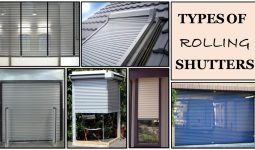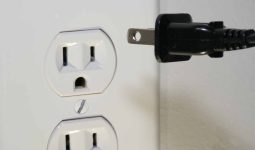There are different types of foam based on their shapes and sizes. It might not be easy to know what to choose the best when choosing the proper components for your mattress or deciding the best foam for a particular purpose or project.
This is partly because foams are labeled differently by different manufacturers.
Because numerous “blends” of foam are created, producers frequently label them. As a result, multiple foam “blends” and specifications are available.
It’s also difficult to measure specific data on different types of foam because of these manufacturing factors. Here are the different types of foam you can encounter.
1. Closed Cell Foam
Closed-cell foam is formed by squeezing a rubber compound with high-pressure nitrogen gas. It is available in various sizes and densities to suit multiple residential and commercial applications.
Thanks to its outer cells, it’s relatively tough and non-porous, which acts as a vapor barrier. This type of foam is suitable for home furniture, carpet underlay, bedding, vehicle, and pipe insulation.
2. Memory Foam
Memory foam, often called “viscoelastic foam,” is a polyurethane foam blended with additional chemicals to increase its density and viscosity.
Memory foam is a highly absorbent material frequently utilized as a top-level internal component in sofas, beds, and seats.
Furthermore, memory foam is typically used as mattresses, sofas, car seats, etc. This is one of the different types of foam.
Memory foam is similar to polyfoam and manufactured using the same components and procedures.
However, as noted in the previous section, it includes the use of compounds that raise the substance’s density and viscosity. Because of this, it’s also known as viscoelastic polyurethane foam.
The term “memory foam” comes from the fact that it immediately molds to your body and keeps the impression when you lie down on it.
Furthermore, if you’re interested in this concept, one thing to remember is the density of the things you’re contemplating.
Remember that the higher this number is, the better the product’s ability to soften in reaction to your body heat and the longer it will last.
3. Polyurethane Foam
Polyurethane, a type of polymer, is used to make the majority of foams. Also, Polyurethane can either be solid or have an open-cell structure, which is called foam.
It is made by combining polyols with diisocyanates produced from crude oil. Depending on the application, various additives are required to create high-quality polyurethane foam products.
Furthermore, if you’re unfamiliar with polyurethane foams, you may have been introduced to them under a different term, such as polyfoam or simply poly.
Also, this is the most prevalent mattress comfort layer, and you’ve almost certainly used it when staying at a friend’s house, in a hotel, or even in your own home.
It is interesting to note that Polyfoam is physically comparable to memory foam. The main difference is that memory foam is manufactured with additional chemicals that cause it to appear to “melt” when you lie down on it.
Remember that three types of polymer foam influence the product’s softness or stiffness as you shop.
As a result, avoid judging quality based on firmness, as polyfoam is adaptable in this area.
Instead, density should be considered when evaluating the quality of PU foam, one of the different types of foam.
4. Gel Foam
We mentioned gel foam briefly when discussing memory foam because it is commonly integrated into the latter.
This is done in the same way that air-cool memory foam improves heat transfer and helps you sleep cooler.
As a result, if you’re intrigued by memory foam but don’t want to risk your body temperature while sleeping, this is a possibility worth investigating further.
Look at how this product is manufactured to understand how intelligent scientists developed it to distribute heat.
Let’s say it’s constructed out of tiny gel beads without making it too tough to comprehend. These beads produce an open-cell structure that aids optimal airflow.
While we frequently imagine ourselves warm and toasty in bed, our body temperatures drop as we fall asleep, and sleep does not occur until this temperature is attained.
As a result, if you’ve been tossing and turning at night, you may require a mattress that allows for better heat transfer.
5. Reflex Foam
Money is scarce, and while items that use memory foam technology may impress you, not everyone can afford them.
Also, reflex foam is an excellent option if you are looking for a less expensive option.
This high-density polyurethane foam is known for its medium firmness and, like memory foam, is made of polyurethane.
Whereas memory foam uses holes, reflex foam uses bubbles that move to conform to your body.
However, when pressure is released, the bubbles return to their former shape, earning “reflex foam.”
6. Latex Rubber Foam
For many people, environmental considerations are critical when purchasing any goods.
With rising concerns about global warming, it’s more vital than ever to consider the requirements of future generations, and you can rest confident that latex rubber foams can help you lessen your carbon footprint.
This is also because it is formed from a milky-white sap found in trees, making it a completely natural product made from renewable resources.
7. Convoluted Foam
“Egg crate foam” is another name for convoluted foam. Also, the rationale for the name is simple: the product’s peaks and valleys mimic those of an egg carton.
It’s typically found in mattress toppers, which support individuals during their nocturnal rest.
Furthermore, if you’re looking for convoluted foams, you won’t be disappointed with what’s available.
You can purchase egg crate foam for a meager price due to the simplicity of the manufacturing process.
8. Charcoal Foam
Charcoal foam can be used in various ways. It’s light and absorbent and can be cut to precise, small, and narrow dimensions. It is frequently utilized in the packaging of shipping goods.
It’s also a sound absorber. Therefore, it’s often used for sound dampening and soundproofing in and around engines. This is one of the different types of foam.
9. High Resilience Foam
HR foam is a high-quality open-cell polyurethane foam with excellent support and elasticity.
It has excellent bounce-back capabilities, is long-lasting, has low motion transfer, and is well-balanced.
High-end beds, chairs, and frequently heavy-use furniture are typical applications.
10. Medium Polyurethane Foam
Many residential uses, such as 5″ or higher-thickness seating cushions, use medium-density polyurethane foam, often known as urethane.
Although not waterproof, a medium foam mattress is suitable for children aged 10 to 15. It can sustain up to 300 pounds of adult weight.








